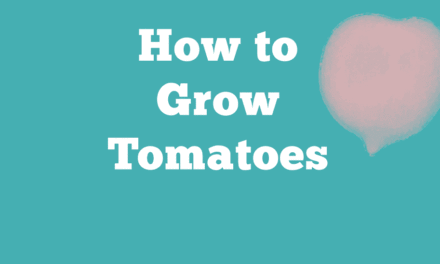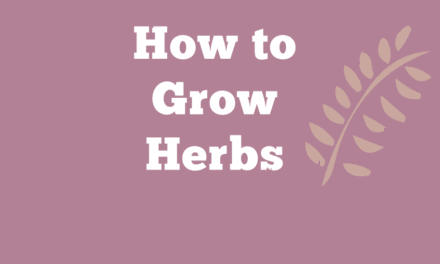How to Grow Organic French Country Herbs
There is no reason to grow French country herbs in any other manner than organic. It’s easy and we’ll show you how to grow healthy and robust plants that are weather and pest resistant. The most common French country herbs are Winter Savory, thyme, rosemary, basil, tarragon and lavender, all simple, fragrant and delicious additions to your organic garden. And you won’t have to visit Provence to enjoy them!
While the French climate is ideal for growing French herbs, there are many climates in the United States and Canada that are similar enough for successful growth. Mid to Northern California has a Mediterranean climate perfect for the growth of French herbs and you will find them all over the wine country and the beautiful suburbs of San Francisco. Regions in the Okanagan of British Columbia have similar climate and French herbs can also be grown here.
French Country herbs make a great addition to any vegetable garden. They are attractive and fragrant and attract beneficial insects such as bees. Thyme makes an excellent ground cover and lavender creates a natural boundary as well as attracting bees.
How to Plant French Herbs
You may choose to plant your French herbs in a traditional herb garden using raised beds and boundaries. Because some herbs are annuals, you will want to combine annuals and perennials for a year-round garden. Most herbs can be grown in window boxes for easy access from the kitchen, as herb plants can be small and do not require much soil.
All herbs require a well-drained soil. If your soil is moist and has high clay content then you will need to plant your herbs in pots or raised beds. However, clay soils can be amended by adding mulched up leaves and manure. French herbs especially need a lot of direct sunlight and regular watering. Fertilize your herb garden just as you would the rest of your organic garden; with a well-developed organic compost and regular mulching.
The following are some details on several specific plants that no French country herb garden would be complete without.
List of Herbs to Grow
-
Basil
A perennial in warm climates and an annual in areas that frost. Basil should be planted in a sheltered and sunny place in very rich soil. Start plants in small pots in early spring and plant about one foot apart when frost has passed. Keep basil well watered and pinch off flowers as they appear. Basil does especially well in greenhouses.
-
Lavender
A perennial shrub, there are many varieties of lavender, most producing attractive purple flowers. These shrubs can grow to be very large and like direct sunlight. While lavender should be watered regularly, you will find that it does well in dry soil. Be sure to trim back your plants in order to keep their size under control.
-
Rosemary
An evergreen shrub, this plant makes an attractive border and produces lovely little blue flowers. Though it is evergreen, it is not resistant to very cold climates. Keep your rosemary plants potted and move indoors at risk of frost. Rosemary prefers a sunny location and well-drained soil. Add bone meal to your soil to loosen if necessary. A rosemary bush will provide fragrant cuttings year round. The flowers can be picked and used in salads with a flavor that is not as intense as the leaves.
-
Tarragon
A hardy perennial, French tarragon is also especially flavorful. Grow tarragon in a sunny and sheltered spot with good drainage. Protect plants in the winter with a layer of straw. Replace plants every several years as they lose flavor with maturity.
-
Thyme
Comes in either a low-growing, ground cover variety or as a tall growing plant. Thyme grows best in soil with a pH of 7.0; you may have to add lime to acidic soil. Be sure to cut back plants after flowering.
-
Winter Savory
A perennial evergreen shrub that can be grown in an herb garden or as a border. Cut back top growth often to encourage growth at the base of the plant. Replace plants every few years as they lose flavor with maturity.
Herb Pest & Disease Prevention
As with all plants, herbs are susceptible to various pests and diseases. A good way of “cleaning” your soil before planting is to solarize it. Solarizing the soil means using the sun to naturally burn out any fungi, bacteria or pests that may be living in it.
What it Means to Solarize Your Soil
To solarize your soil, whether for an indoor or outdoor garden, plan ahead. During the hottest part of the year cover a patch of soil with a sheet of clear plastic. Leave the plastic in place for several weeks. The plastic and the sun together will heat the soil to a temperature in which no pests or diseases can survive.
How to Use Beneficial Insects to Protect Your Herbs
You may also choose to protect your herbs from fungus and bacteria by beefing up the soil with organic matter. A variety of plants in your garden and healthy soil are your best defences. A variety of plants will attract beneficial insects, insects that will protect your herbs. Most insects are beneficial to your garden. Healthy soil promotes healthy plants, which are better able to ward off diseases and pests.
Overall, herbs are quite hardy and easy to grow. Their strong taste is appealing to us, but not to many insects, which eliminates the need for pesticides. Herbs require minimal care and are happy in many climates. Your organic herb garden is sure to be a fun and delicious addition to your garden and kitchen.



